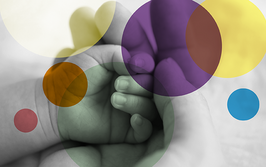The Next Stage For the Cell Therapy Story
Cell therapy has come a long way since the 1930s. Next, we need to find a way to bring the costs down by using allogeneic approaches.
Bill Vincent | | 4 min read | Opinion

The field of cell therapies has a rich and intricate history, marked by both remarkable achievements and formidable challenges. Bone marrow injections employed to treat aplastic anemia in 1939, though rudimentary in comparison to the sophisticated cell therapies of the modern era, laid the groundwork for further exploration of cell-based treatments.
In 1975, researchers shifted their focus to autologous bone marrow stem cell transplants, using the patient’s cells to mitigate the risk of graft-versus-host disease (GvHD). In the ensuing decades, this approach gained considerable traction, culminating in the first use of gene therapy in humans in 1990: the treatment of severe combined immunodeficiency (SCID) using genetically modified autologous bone marrow stem cells.
This milestone represented a pivotal moment, ushering in an era of gene therapy applications and ultimately leading to the first approved gene therapy, Glybera, in 2012. The same year also witnessed the use of gene-modified autologous T cells in the development of CAR-T therapy to treat leukemia.
Despite the success autologous therapies have seen, in part owing to their ability to reduce immunogenicity and rejection risk by using the patient’s own cells, the personalized nature of these therapies is also a significant economic challenge. The complex and labor-intensive process of harvesting, modifying, and reinfusing a patient’s cells often results in exorbitant costs. Libmeldy, a gene therapy for a rare genetic disorder, exemplifies this issue, with a price tag of nearly $3 million per treatment. High cost severely limits access to these potentially life-saving therapies, raising concerns about equity and affordability.

The allogeneic advantage
Allogeneic therapies, using cells from healthy donors, hold the promise of revolutionizing patient access to cell-based therapies. Manufactured in advance and stored until needed, they eliminate the requirement for personalized processing — creating “off-the-shelf” availability. The scalable manufacturing processes used to produce allogeneic therapies lead to economies of scale, lowering production costs and addressing economic barriers to treatment.
Recent advances in allogeneic cell therapy are also driving improvements in safety and efficacy, particularly in cancer treatment. Innovative gene-editing technologies, such as TALENs and CRISPR-Cas9, are being used to significantly reduce the risk of GvHD [Can you briefly explain how?]. Concurrently, “immune cloaking” techniques are being developed to shield allogeneic CAR-T cells from the patient’s immune system, further minimizing the potential for rejection (1, 2, 3).
In 2022, Atara Biotherapeutics made history with the European Commission’s approval of Ebvallo (tabelecleucel), marking the world’s first authorization for an allogeneic T-cell therapy. Offering a potentially transformative treatment option for patients with relapsed or refractory Epstein-Barr virus-positive post-transplant lymphoproliferative disease (EBV+ PTLD), this was a significant milestone in the cell therapy field.
The Medicine Maker Presents:
Enjoying yourself? There's plenty more where that came from! Our weekly Newsletter brings you the most popular stories as they unfold, chosen by our fantastic Editorial team!
Although recent advancements are paving the way for wider clinical application of allogeneic therapies, their successful implementation and commercialization rely on developers and manufacturers overcoming several key challenges:
- Cost efficiency and scalability. Widespread accessibility of allogeneic therapies hinges on achieving both cost-effectiveness and large-scale production. Allogeneic manufacturing requires significantly higher cell volumes to treat multiple patients from a single batch than autologous approaches. The expansion phase, in particular, necessitates sophisticated bioreactors and meticulous batch processing to ensure consistent efficacy and safety while maintaining affordability.
- Addressing donor cell variability. To ensure the safety and efficacy of allogeneic therapies, developers must address variability issues, including inherent donor cell variability. Rigorous screening and characterization of donor cells are crucial to minimize this baseline variability.
- Navigating regulatory considerations. The relative novelty of allogeneic therapies compared to autologous counterparts means regulatory agencies are still developing a comprehensive understanding of their unique complexities, leading to uncertainties and delays in the approval process.
Successfully navigating these challenges necessitates a multifaceted approach, where early and thorough process development is paramount. By proactively investing in robust process development from the outset, biopharma companies can preempt costly setbacks during clinical trials and regulatory reviews. This entails optimizing cell expansion and manufacturing protocols, implementing stringent quality control measures, and addressing potential concerns related to donor cell variability.
Additionally, fostering close collaboration with regulatory agencies with open communication and transparency can help set clear expectations and streamline the approval process. As regulatory bodies gain more experience with allogeneic therapies, we can anticipate the emergence of a more streamlined and efficient framework.
In my view, the cell and gene therapy landscape is rapidly evolving, with allogeneic cell therapies poised for significant growth. While autologous therapies are bound to retain their importance, the future of medicine lies in a diverse toolkit of treatment options, each carefully tailored to specific diseases and patient populations. For certain indications, autologous approaches will likely remain the gold standard. However, the rapid advancements in gene editing technologies, exemplified by the progress of technologies like CRISPR, hold immense potential for developing universal donor cells and addressing challenges such as GvHD. These advancements extend beyond cancer, offering hope for treating degenerative diseases and ushering in a new era of personalized and accessible medicine.
- Z Lv, F Luo, Y Chu, “Strategies for overcoming bottlenecks in allogeneic CAR-T cell therapy,” Frontiers in Immunology, 14 (2023). Doi: 10.3389/fimmu.2023.1199145
- C Lonez, E Breman, “Allogeneic CAR-T Therapy Technologies: Has the Promise Been Met?” Cells, 13 (2024). Doi: 10.3390/cells13020146.
- S Jo et al., “Endowing universal CAR T-cell with immune-evasive properties using TALEN-gene editing,” Nat Commun 13, (2022). Doi: 10.1038/s41467-022-30896-2
CEO at ArgiaBio



















